If you’re on the hunt for the secret to amazingly textured tofu, you’ve come to the right place. Yup, the secret is in the freezer! Learn everything you need to know about frozen tofu here for an absolute game-changing kitchen trick.

What is tofu?
First things first, let’s talk about tofu! This versatile ingredient is made from curdling soy milk and pressing it into blocks. Much like tempeh, it’s known for its mild flavor and high protein content, and it has been a staple in East Asian cuisine for centuries.
Its sponge-like properties give it the ability to absorb flavors and adapt to a variety of recipes, like tofu curry, vegan bolognese, tofu bánh mì, and more. For more information on this miracle food, check out our tofu 101 post!
Why freeze tofu?
So, why should you even freeze tofu anyways? For these two simple reasons:
- Texture: Freezing tofu causes the water inside to expand, forming ice crystals that create tiny holes in the tofu. Once thawed, these holes are left behind. This gives the tofu a texture that soaks up marinades and sauces even better than its fresh counterpart.
- Firmness: Frozen tofu is firmer than fresh tofu. Plus, it holds its shape better during cooking, making it perfect for stir-fries, grilling, and baking.

Which type of tofu is best for freezing?
In the world of tofu, not all types are created equal, especially when it comes to freezing. If you’re considering freezing tofu for later, firm and extra-firm are your best bets. Here’s why:
- Firmness: Both firm and extra-firm tofu hold their shape well during the freezing and thawing process. Their denser texture stands up to freezing, ensuring you don’t end up with crumbly tofu.
- Texture improvement: The freezing process is particularly beneficial with firm and extra-firm tofu, as it helps them to absorb marinades and sauces better.
- Versatility: Given their improved texture post-freezing, firm and extra-firm tofu can be used in a variety of dishes, from stir-fries and curries to baked or grilled recipes.
On the other hand, silken and soft tofu aren’t the best choices for freezing. Their high water content and delicate nature can result in an overly spongy texture once thawed. These types are best used fresh in dishes like soups, smoothies, and desserts.
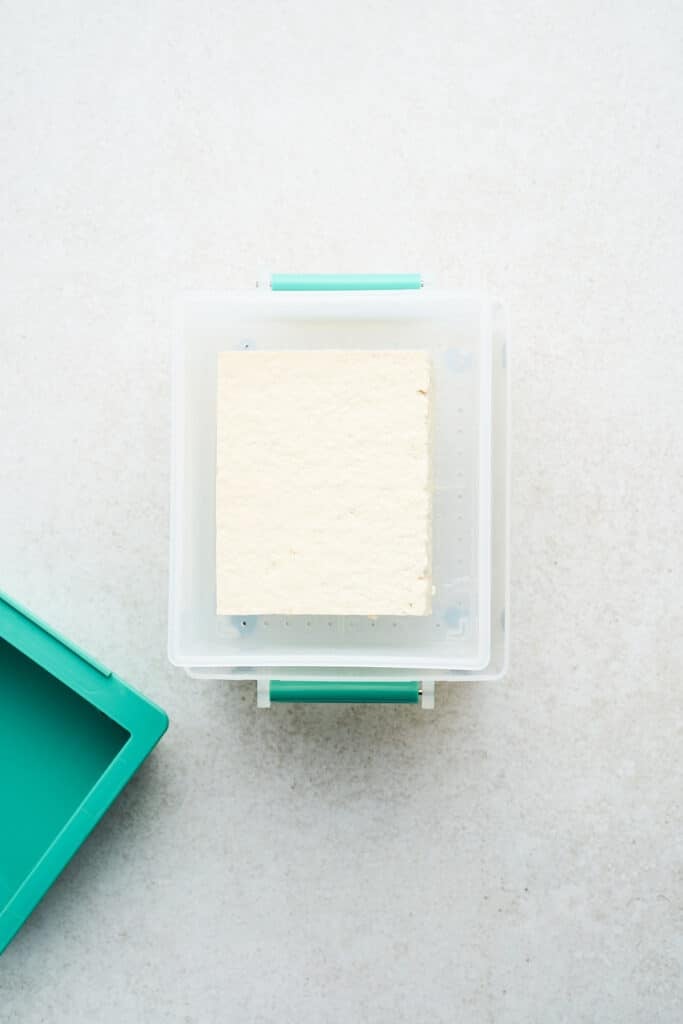
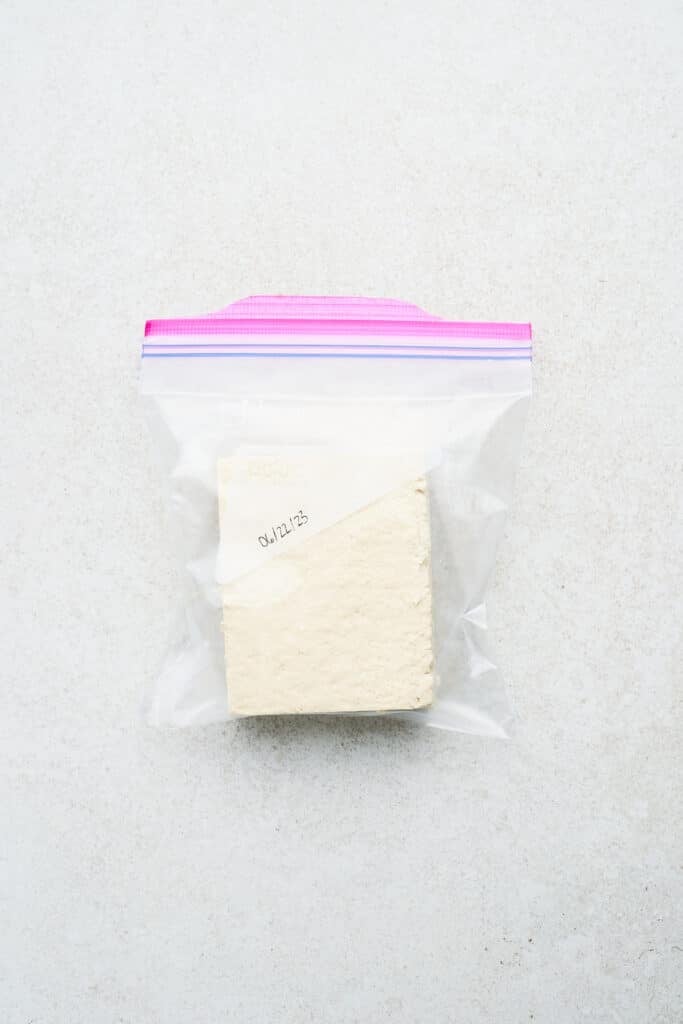
How to freeze tofu
Freezing tofu couldn’t be an easier process! Here’s what to do:
- Drain and press: Remove the tofu from its packaging and drain the water. Press the tofu in a tofu press or between two heavy plates for about 15-30 minutes.
- Slice: You can freeze tofu as a whole block or cut it into slices or cubes. I usually just throw it in whole so it’s quicker and easier.
- Freeze: Place the tofu in a freezer-safe bag or container, ensuring all of the air is removed. Freeze it for at least 24 hours for the best texture.
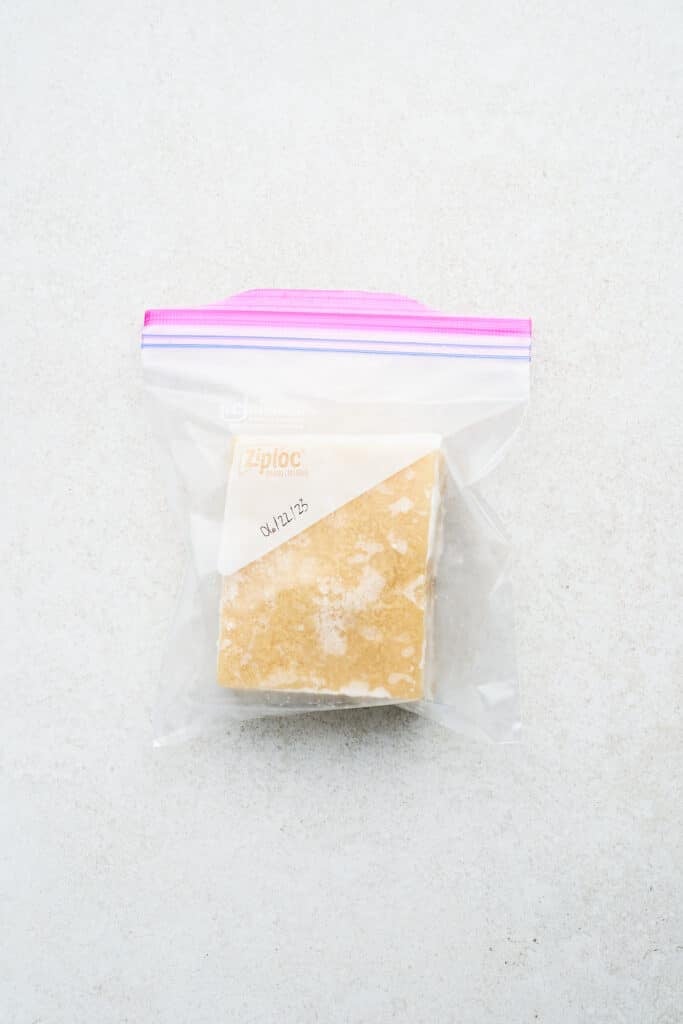

How to thaw frozen tofu
Thawing frozen tofu properly is essential for achieving the perfect texture. You can use one of two methods:
- Fridge: Transfer the frozen tofu from the freezer to the fridge and let it thaw slowly. This can take up to 24 hours, so plan accordingly!
- Counter: If you’re pressed for time, you can also thaw the tofu at room temperature for a few hours. Whatever you do, just don’t use the microwave to defrost — it will unevenly heat your tofu and result in a rubbery texture.
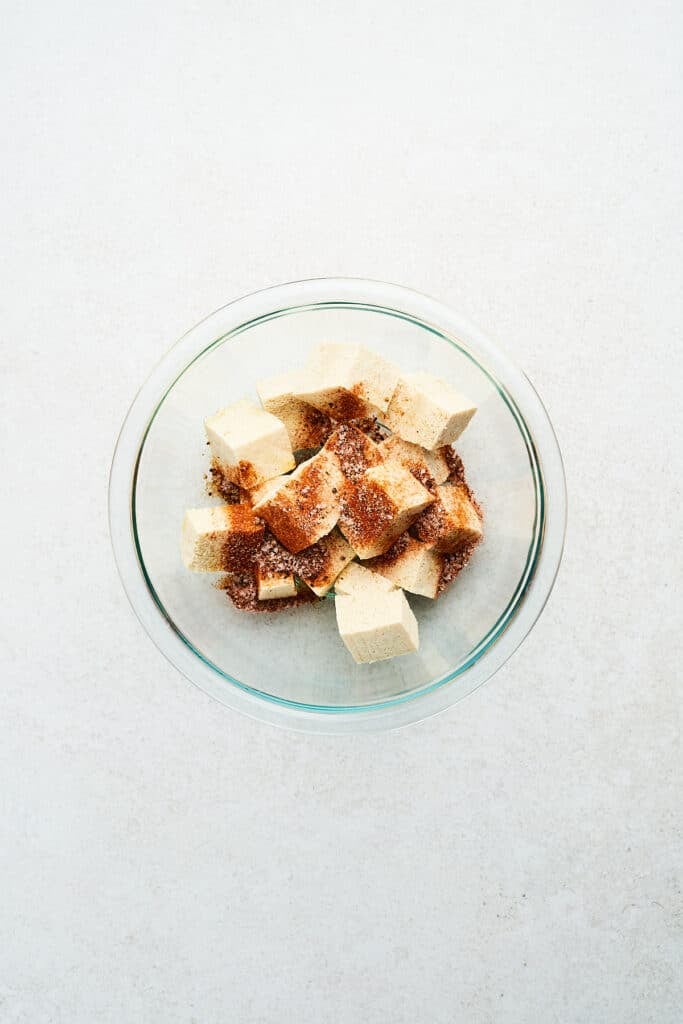
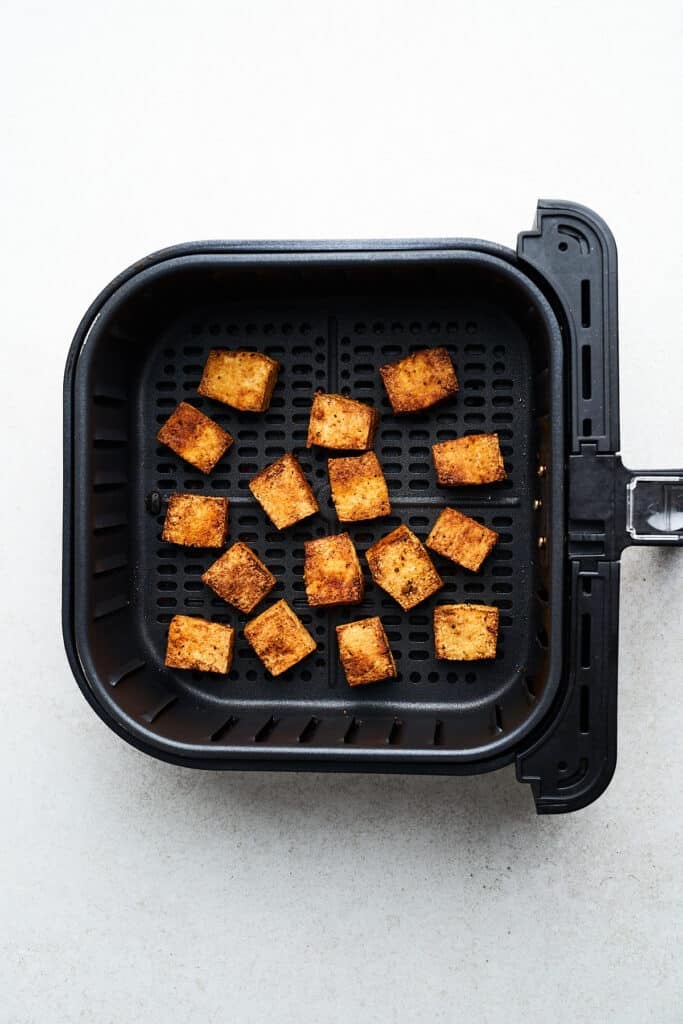
How to cook frozen tofu
- Press the tofu: Once the tofu is thawed, drain and press out any excess moisture.
- Cut and season: If you haven’t already cut the tofu, slice it into your desired shapes – cubes, strips, or steaks. You can keep the seasonings simple or use a marinade.
- Marinate: If you choose to marinate your tofu, allow it to soak up the flavors for at least 30 minutes, but preferably overnight.
- Cook the tofu: You can bake, stir-fry, grill, or pan-sear your tofu. For a crispy exterior and a tender interior, I love to roast it in the oven or make air-fried tofu. Alternatively, you can sear it on high heat in a non-stick pan with a bit of oil.
Tips for cooking frozen tofu
- Marinate: Marinate your tofu for at least 30 minutes before cooking it so it soaks up all the flavors like a sponge!
- Sear: Searing your tofu adds an extra layer of texture and flavor before adding it to your recipes. Try not to flip the cubes frequently so they have time to brown on all sides.
- Season it well: Remember to season your tofu well. It’s very plain on its own, so it can handle the marinade!

Recipes with tofu
Frozen tofu can be cooked into any number of tofu recipes, and it’s best when a chewy, firm structure is what you’re going for! If you’re still not sure what you can make with frozen tofu, here are a few delicious and easy recipes to spark your imagination:
- Crispy Baked Tofu Nuggets
- Thai Coconut Curry
- Crispy Air Fried Tofu
- Marinated Tofu (8 Flavors!)
- Grillable Tofu Burgers
FAQs About Frozen Tofu
Yes, you can refreeze thawed tofu. However, the texture becomes spongier each time it’s refrozen. I suggest only freezing it once if possible.
You can keep tofu in the freezer for at least 3 months without it losing its quality. I always have a few blocks in there so they’re ready when I need tofu for a recipe.
No, freezing tofu does not change its nutritional content.

Ingredients
- 1 block firm or extra-firm tofu
Instructions
Freezing
- Press: Remove the tofu from its packaging and drain the water. Press the tofu in a tofu press or between two heavy plates for about 15-30 minutes.
- Freeze: You can freeze tofu as a whole block or cut it into slices or cubes. Place the tofu in a freezer-safe bag or container, ensuring all of the air is removed. Freeze it for at least 24 hours for the best texture.
Thawing
- Thaw: Transfer the frozen tofu from the freezer to the fridge and let it thaw slowly. This can take up to 24 hours, so plan accordingly. You can also thaw the tofu at room temperature for a few hours.
- Cook: Cook the frozen tofu as you normally would, whether baked, air-fried, or pan-fried.

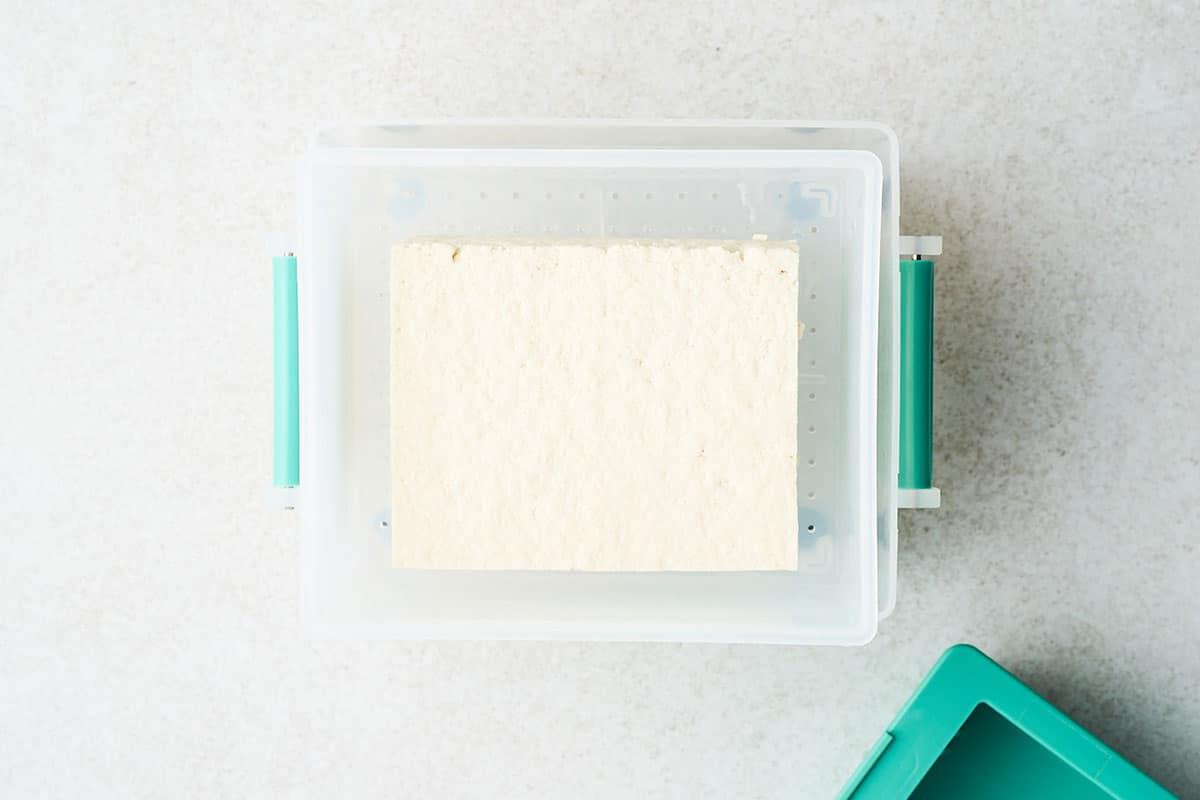
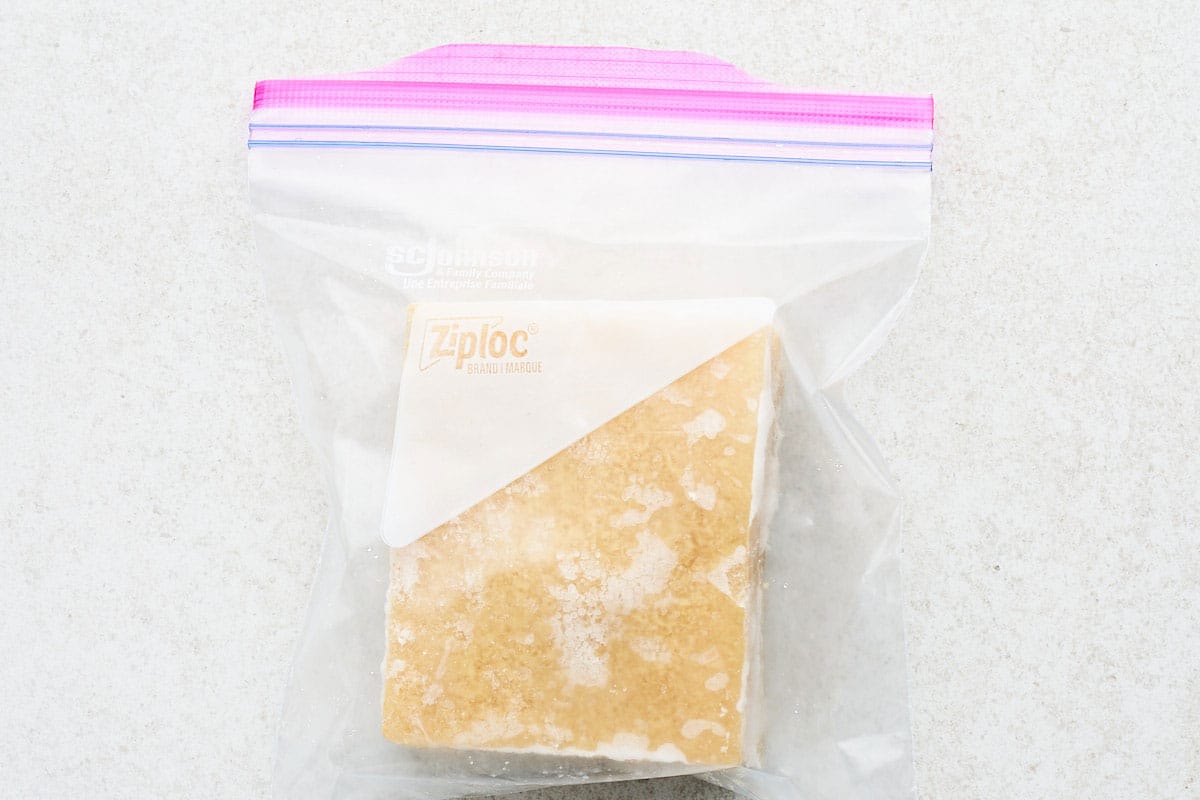

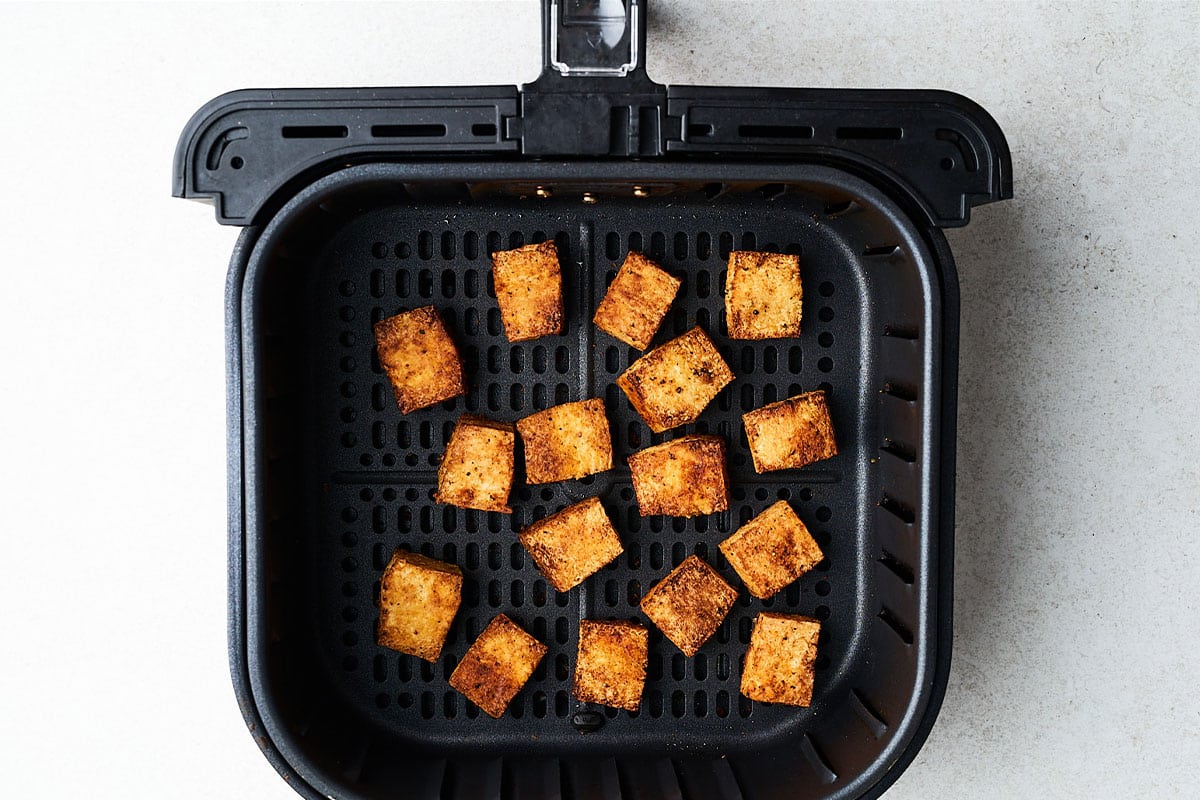

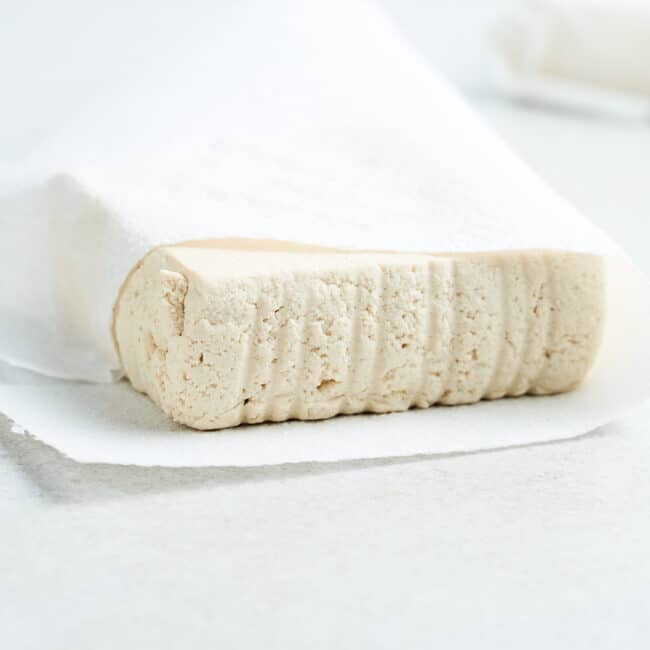

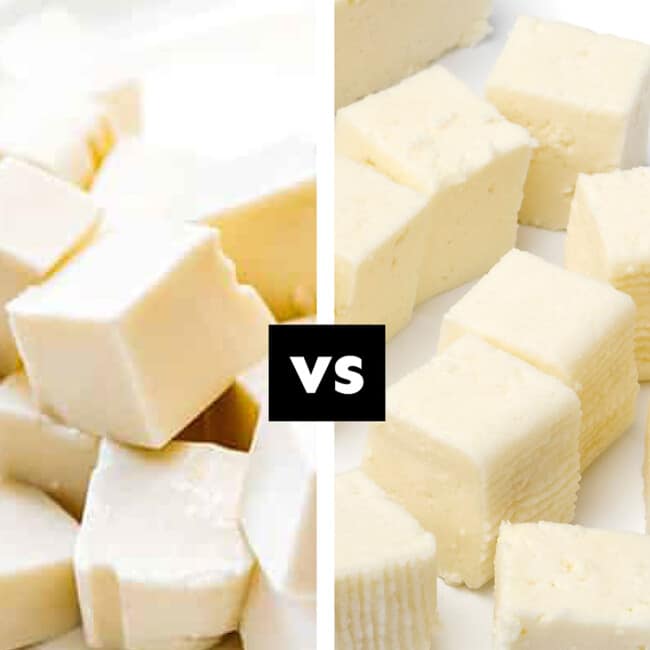
Leave a Comment